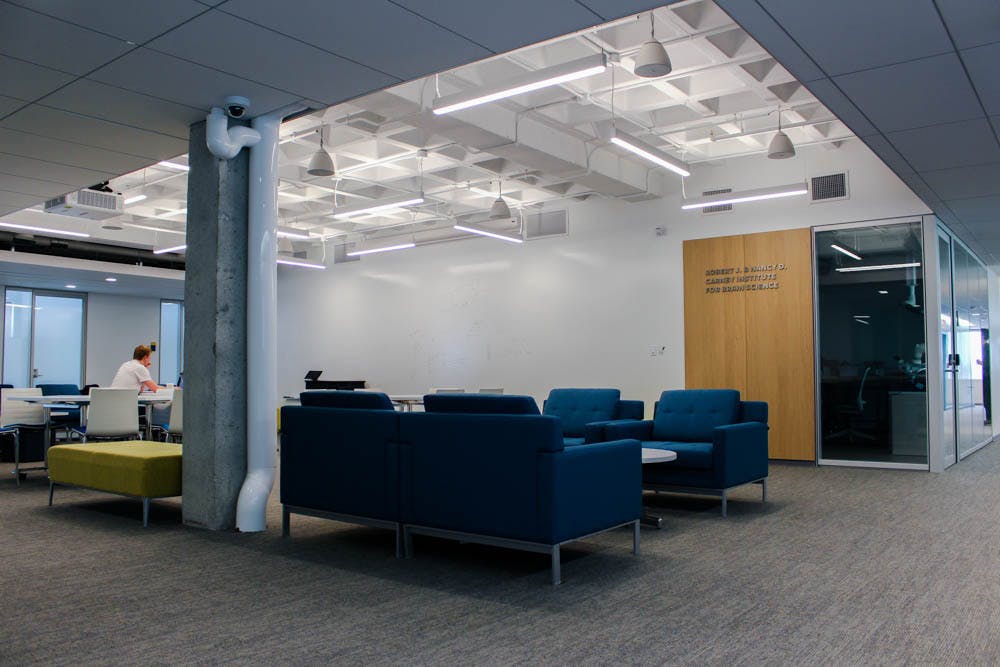About two months ago, the Carney Institute for Brain Science moved into its new home above the University’s bookstore, which provides new and improved collaborative spaces.
“It’s very exciting for us to have a home that is right in the middle of campus, just right in the center of everything,” said Diane Lipscombe, director of the Institute. “It’s a wonderful community, and I think we’re all walking around with (a) spring in our step.”
“Everyone is a little more bright-eyed and excited” about the new space, said Henry Jones ’19, who received an Undergraduate Teaching and Research Awards grant in the Carney Institute last summer. “The design of the rooms is really good (for) communicating a quick idea.”
The Institute’s former building was not a good gathering space for students and faculty, said R. John Davenport, managing director of the Carney Institute. The offices ranged in size, and people were scattered throughout the building. The new space at 164 Angell St., which includes offices, conference rooms and space for collaboration, is much more conducive to communication across the team, he added. “I think of this place as the town square or the town hall of Carney,” Davenport said. “It’s a place where … everyone can come and meet and discuss ideas and discuss new scientific projects.”
The new space is also used by four research laboratories that are primarily focused on computation, Lipscombe said. Thomas Serre, principal investigator of one of the research labs in the new facility and professor of cognitive, linguistic and psychological sciences, identified the openness of the space as one of its main benefits.
“The challenge with computational neuroscience is that it really draws on many, many disciplines, and as a result, we have students scattered across campus,” Serre said. The Institute’s new space allows students to meet, collaborate and start projects, he added, which will hopefully attract more students to computational neuroscience.
The faculty using the labs at 164 Angell St. come from three different departments: neuroscience, engineering and CLPS. “It really is a collaborative facility (with) faculty from three different departments coming together,” Lipscombe said. The goal of the new facility was to “create the opportunity to do something different,” she added. “And I would say we really succeeded in that.”
The move to 164 Angell St. follows a $100 million donation to the Institute last year from Robert Carney ’61 and Nancy Carney, one of the largest gifts in University history, The Herald previously reported. The donation provided a long-term financial foundation for the Institute and solidified it as a permanent entity that the University will continue to support, Davenport said.
“The primary impact in the immediate term was that the Carney gift just instantly changed the visibility of the Institute and put us in a new realm of being recognized around the country,” he added. The donation will also help the Institute facilitate faculty growth over and likely beyond the next decade, and will allow the Institute to continue speaking with “generous donors about providing funding in certain areas,” such as graduate work or research in a particular field that interests donors, Davenport added.
Looking to the future, Davenport discussed the idea for a lab space for “cutting-edge microscopy,” which would require more funds and more room than the current lab space at 164 Angell St. Brain science is “a very expensive business,” Lipscombe said. “It’s just really difficult for any individual department or any individual lab to keep up with the advances in technology, so we are extremely interested in ensuring that we can do that.”





